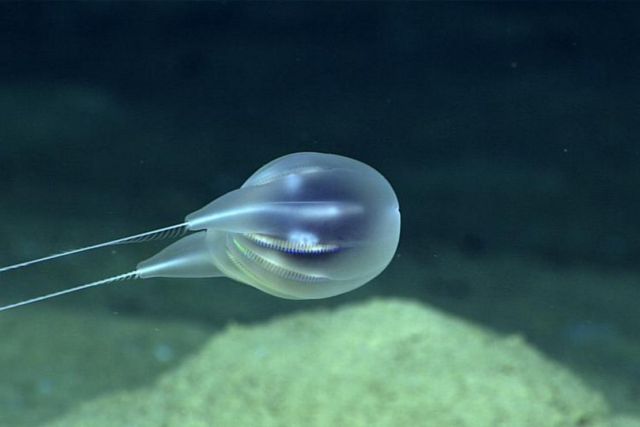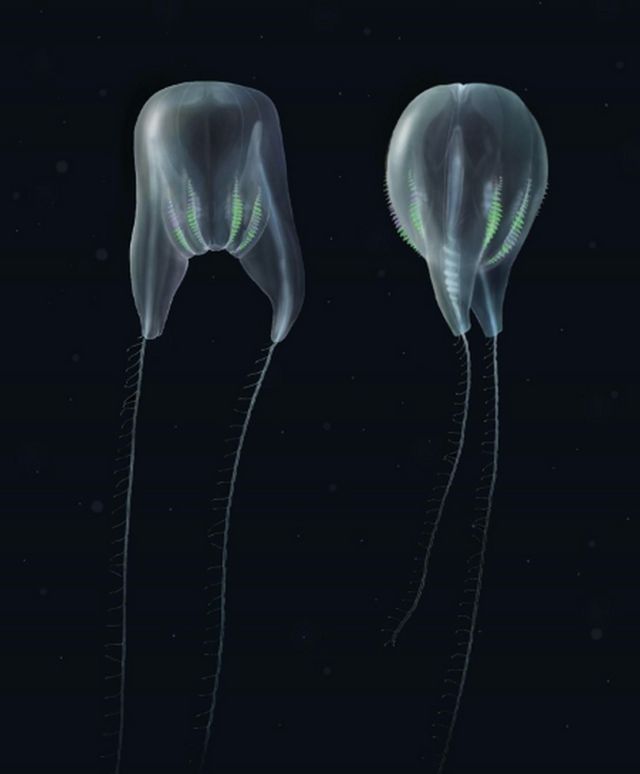NOAA scientists using Deep Discoverer remotely operated vehicle, discovered new species of comb jelly, resembling a hot air balloon.
A NOAA Fisheries research team discovered Duobrachium sparksae, a new species of ctenophore, or comb jelly, two and a half miles below sea level, near Puerto Rico.
The discovery was made during an underwater expedition led by the NOAA Office of Ocean Exploration and Research. The new species and a new virtual method of describing and documenting the discovery are both explained in Plankton and Benthos Research.
Most comb jellies have eight rows of comb-like cilia that rhythmically beat, refracting light into colors, as they paddle through the water. Between 100–150 species of comb jellies have been identified and validated. They are all carnivores and many are highly efficient predators that eat small arthropods and many kinds of larvae. Although they look similar, comb jellies and jellyfish are not closely related.
Illustrations by Nicholas Bezio
source NOAA







Leave A Comment